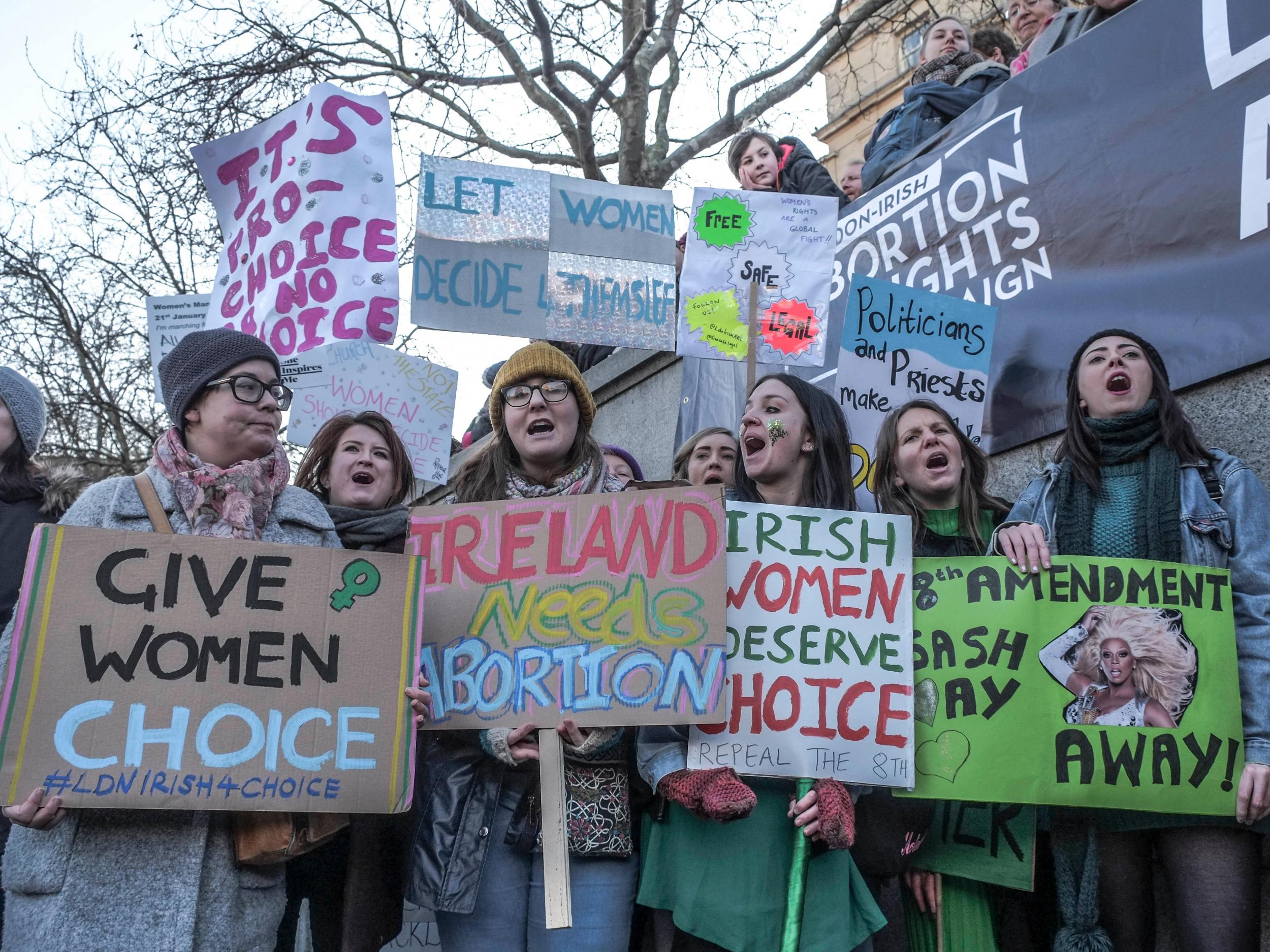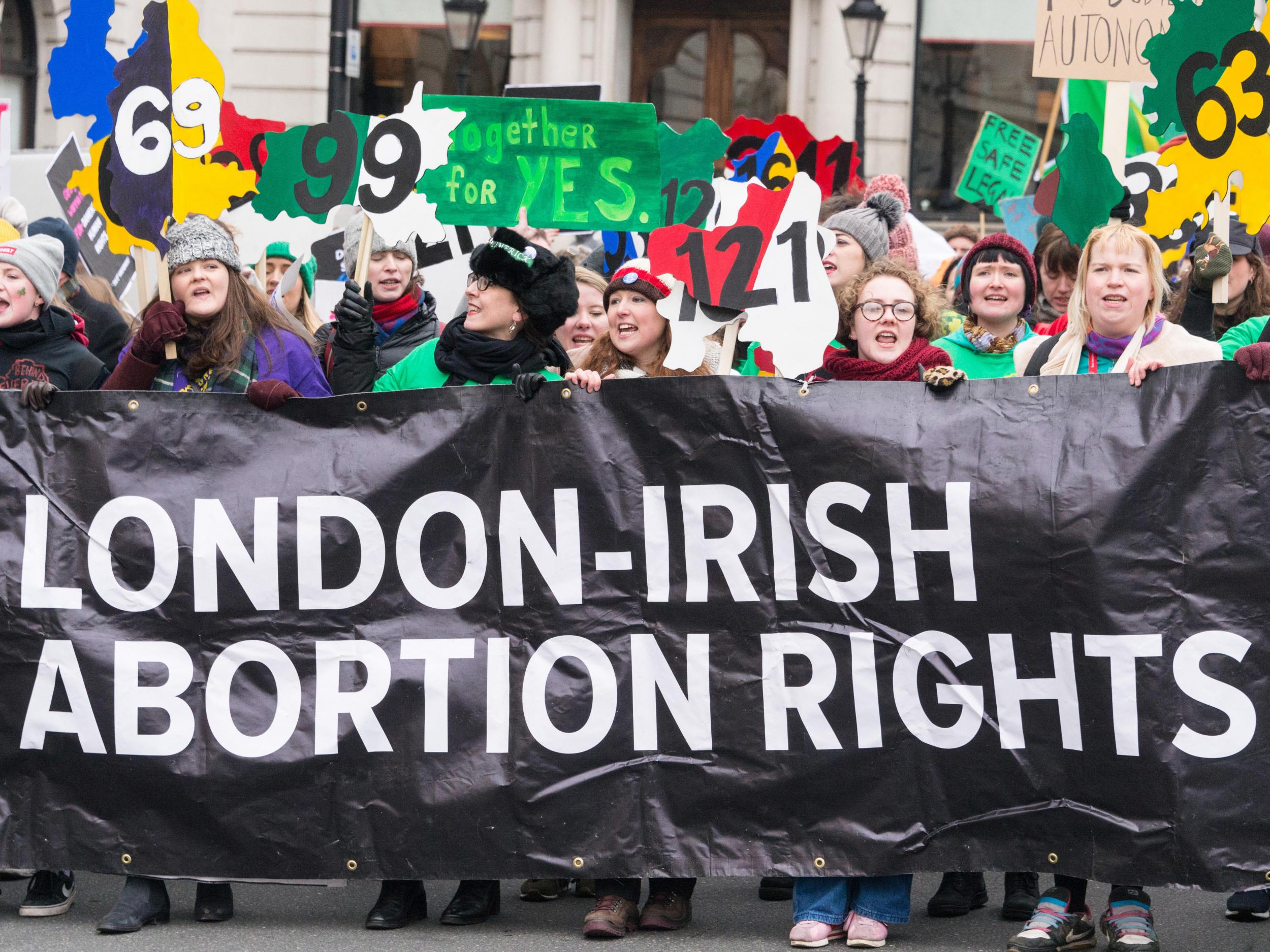For Irish women, it's not just abortion rights that are on the ballot this week
They are fighting against medical traditions that put their health at risk

Your support helps us to tell the story
From reproductive rights to climate change to Big Tech, The Independent is on the ground when the story is developing. Whether it's investigating the financials of Elon Musk's pro-Trump PAC or producing our latest documentary, 'The A Word', which shines a light on the American women fighting for reproductive rights, we know how important it is to parse out the facts from the messaging.
At such a critical moment in US history, we need reporters on the ground. Your donation allows us to keep sending journalists to speak to both sides of the story.
The Independent is trusted by Americans across the entire political spectrum. And unlike many other quality news outlets, we choose not to lock Americans out of our reporting and analysis with paywalls. We believe quality journalism should be available to everyone, paid for by those who can afford it.
Your support makes all the difference.It’s tough to be a woman in Ireland.
Tomorrow Irish voters will go to the polls to decide the fate of their constitution’s eighth amendment, which gives pregnant women and foetuses the same rights, creating an extra barrier to the legalisation of abortion in the country.
That vote will happen against the backdrop of the CervicalCheck scandal, in which terminally ill women and the families of women who have already died have discovered that Ireland’s Health Service Executive, the national healthcare provider, received and then concealed inaccurate medical records and screening histories, depriving these women of much-needed care.
As one satirical news site, referencing a television show that portrays a dystopian future in which women are stripped of all power, put it: “Women of Ireland to Watch The Handmaid’s Tale to Escape Grim Reality.”
The referendum and the health scandals highlight the ways that the female body, much more so than the male, remains both a mystery and a nuisance, subject to the intervention of state and society.
Within these debates, women’s bodies appear to present authorities – mostly male – with issues they struggle to comprehend. More than that, they underscore how much the female body itself continues to be seen as a problem to be solved.
These beliefs about women’s bodies are embedded deep within the institutional and intellectual history of medicine. Since the time of Hippocrates (around 400BC), Western medical knowledge has been created by men and has been used to advance assumptions about male superiority and female inferiority.
Those gendered beliefs are most clearly evident in the humoral system, an idea that Hippocrates’s son-in-law Polybus originated in the fourth century BC.
The humoral system contended that the humours – black bile, yellow bile, phlegm and blood – needed to exist in equilibrium lest they trigger illness and malaise in both body and mind. The popular remedy of bleeding allowed the medical practitioner to, theoretically, restore balance (though in a risky fashion).
But not all bodies were considered equal. Men and women were classified as possessing different measures of each humour, corresponding to their physical and emotional characteristics. Men were hot and dry – which explained why men went bald; heat left through their heads – and women possessed the less positive attributes of cold and wet.

Imbalances in the female humours – like excesses of black bile, or melan chole – were considered more dangerous, bringing on malaise or depression much more quickly and acutely than in the male.
The humoral system gave credence to the belief that the female body was less ordered, making women inherently more passive than men. While the humoral system fell out of favour in the 19th century, the language that now surrounds the “hormonal behaviour” of men and women suggests that the long-held prejudices embedded in it have lingered on.
Taboos about menstruation, stereotypes about “mom-brain” and the portrayal of testosterone as an active, “go get ’em” hormone align with gendered categories of human physiology and psychology that date back to Aristotle.
Up until the 18th century, investigating the human body remained a highly restricted business. Anatomists were suspected of being grave robbers and accused of tampering with and indeed of questioning God’s creation.
Religious authorities limited scientific advancement, which in part explained why the work of Galen, a second century physician, remained the cornerstone of anatomical knowledge well into the 17th century.
In the 16th century, anatomists such as Andreas Vesalius defiantly challenged those traditional restrictions and began to publish their findings, presenting new anatomical models based upon the dissection of human cadavers.
This gave much greater nuance and accuracy in comparison with the long-held Galenic beliefs that had been based upon the dissection of primates.
But despite this new knowledge, the distinctions between male and female bodies were hard to revise. It was particularly hard to shake the belief that the female body was simply an imperfect version of the male body.
The female body even thwarted investigation: after all, while the male reproductive organs were outside the body, the female organs remained hidden away inside.
Viewing the ovaries as testicles and the vagina as an inverted penis formed part of the overall picture of women as incomplete men.
The 16th century story of Marie Germain (reported most notably by Michel de Montaigne) played on these beliefs: running after her flock, this shepherdess purportedly jumped too vigorously and thus expelled her reproductive organs, instantaneously changing sex.
This idea that the female body was a topsy-turvy version of the male is expressed memorably in the concept of the “wandering womb”. According to this belief, traced back to Hippocrates, female maladies were caused by the uterus literally moving around the body, causing chaos wherever it went.
Plato described the empty womb as “furiously angry”; it “wanders everywhere throughout the body”.

The cure was quite simple: put it to use, and as often as possible. As much as pregnancy and childbirth posed real risks to a woman’s health, medical authorities as late as the 19th century believed an empty womb created even more danger for a fertile woman.
This link between the womb and mental and physical instability was surprisingly durable: indeed, the idea of the “wandering womb” was still doing the rounds when Sigmund Freud first published his theories on female hysteria in the mid-1890s.
Medicine may have advanced since the 19th century, but traditional prejudices remain embedded in health practices and health policies today.
These assumptions have serious consequences: scientists are less likely to research diseases that primarily affect women, and physicians are less likely to take the complaints of female patients seriously.
Studies have shown that physicians dismiss females’ pain (as well as more serious symptoms) more readily than males’, and yet authorities view the female body as a problem to be solved with invasive policies. As a result, women tend to receive worse care and experience worse outcomes.
The CervicalCheck scandal in Ireland underscores the persistence of these trends. The optics are hard to ignore: three men heading government and health authorities (backed by their respective powerful institutions) faced off against several women, private individuals who have had to fight for their right to speak publicly.
Those women’s voices have helped bring the scandal to light. Last month, mother-of-two Vicky Phelan, terminally ill with cervical cancer, stood on the steps of the Four Courts and outlined her discovery that the Health Service Executive had concealed shortcomings in her cervical screening history.
An audit of Phelan’s results and that of hundreds of others revealed that not only had their slides been misread, but the discovery of this oversight had been kept from them.
Phelan refused to sign a confidentiality clause as part of her €2.5m (£2.2m) settlement, thus paving the way for hundreds of others to discover the truth about their own files. Tragically 18 of those affected had already died, but their medical records had also been kept from their families.
The distinct gendered picture painted by the CervicalCheck scandal is echoed in the referendum debates, which have been notable for the difficult balance broadcasters have tried to maintain.
The debate has been dominated by men’s voices, in part because of the enduring inequalities in the medical profession.
When it comes to evaluating, diagnosing and treating women for serious illnesses, the female patient is still often treated by a male expert.
And this is a serious issue with potentially fatal consequences. So long as women’s bodies are treated as problems to be solved – and as problems too inscrutable to solve – women will continue to receive substandard care and to be governed by laws that limit their access to the full spectrum of medical options.
© The Washington Post
Join our commenting forum
Join thought-provoking conversations, follow other Independent readers and see their replies
Comments